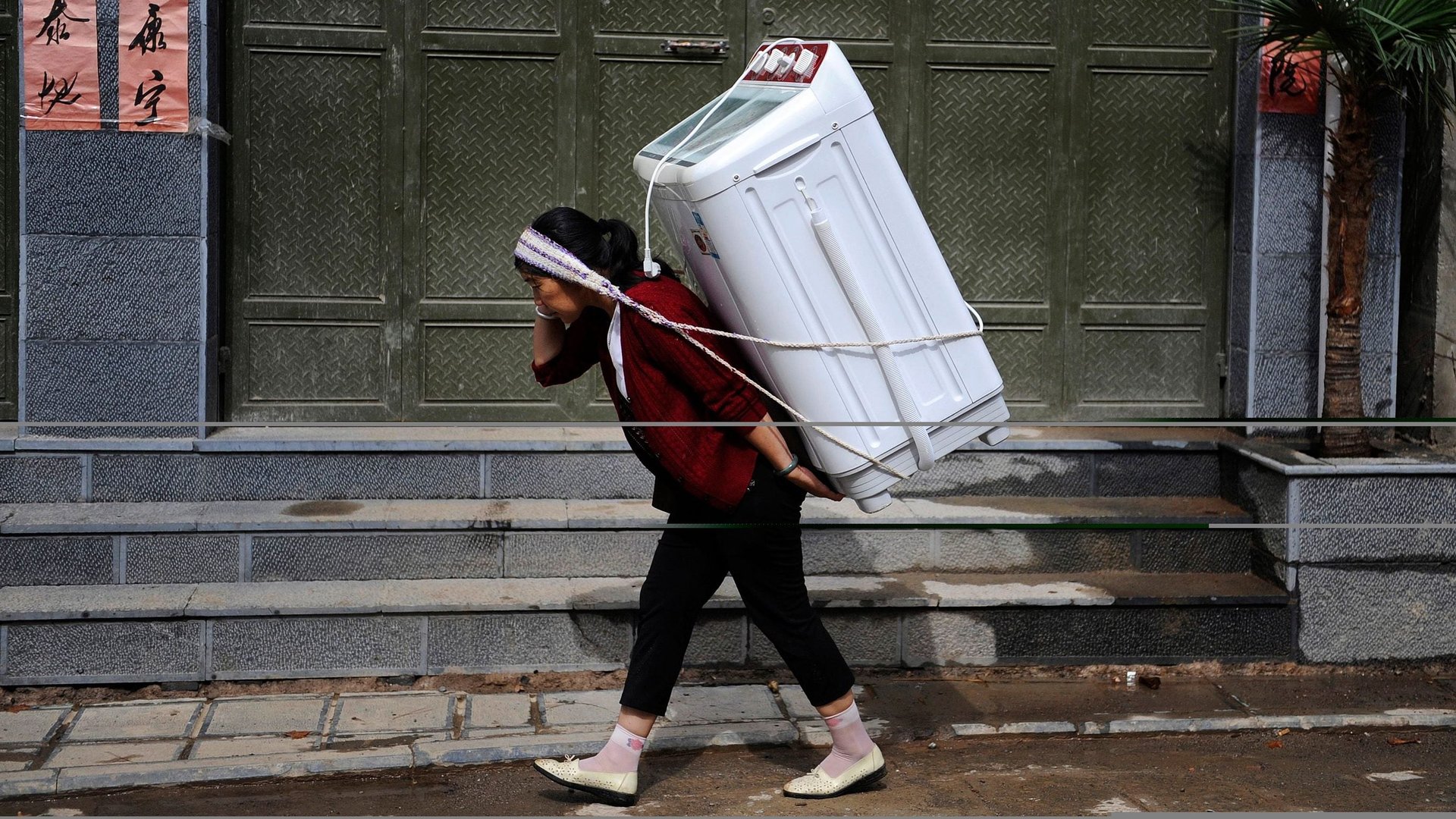“Semi-automatic” washing machines are an unexpectedly neat trick for apartment-dwellers
I discovered the mini washing machines known as “semi-automatics” when I lived in Japan in the 1990s, where homes tend to be small and efficient, and appliances were designed to be cute. These diminutive machines were charming, but only quasi-convenient. Nevertheless, I fell in love with the semi-automatic’s simplicity.


I discovered the mini washing machines known as “semi-automatics” when I lived in Japan in the 1990s, where homes tend to be small and efficient, and appliances were designed to be cute. These diminutive machines were charming, but only quasi-convenient. Nevertheless, I fell in love with the semi-automatic’s simplicity.
A semi-automatic is typically lightweight and comprised of two side-by-side tubs encased in plastic, one for washing, one for spin-drying.
In the US, these machines are completely foreign to most (and “semi-automatic,” unfortunately, is more likely to refer to a firearm), but you can pick one up at Walmart, or through Amazon. (Recent YouTube reviews suggest the word is trickling out.) Their size and portability make them ideal for RVs, tiny houses, and, with a little MacGyver-ing, apartments.
I recently bought one because I now live in a pre-war rental building in New York, where fully automatic machines are often banned by landlords nervous about floods. (The risk of flooding with a semi-automatic is minimal because you fill them from a tap rather than let water flow continuously into them—so any spills would be equivalent to tipping over a bucket of mop water.)
If you’re used to sturdier, more imposing machines, these contraptions can look like toys by comparison. They might stand as high as your bathroom counter, though I bought a compact model that’s short and squat, only 23 inches (58 centimeters) high and 26 inches (66 centimeters) wide.
This example, made by Hyundai, is more typical, standing 3 feet high:
Because they’re so cheap (I paid less than $100 online), and so effective, semi-automatic washing machines are more common in developing countries, including rural China and India, and in Brazil. According to Euromonitor, a market research company, sales of semi-automatic washing machines are actually a useful economic indicator: Their “Semi-automatic Washing Machine Index” shows that sales of these home appliances increase as emerging markets grow their middle class. But once a country’s middle class makes up 15-20% of its population, people start upgrading to fully-automatic machines, and sales of semi-automatics decline, never to recover. In rural China, consumers are now upgrading to fully automatic machines, but in Brazil, the market is expected to continue growing.
To use one, you begin by manually filling the larger tub with tap water. In my case, the skinny hose that came in the box did not attach to my faucet (they’re not designed for North American sinks), so I had to improvise, grabbing a pitcher. A handheld shower nozzle would also work. Next, add your small bundle of laundry (8 to 13 pounds of clothes, depending on the model—maybe one pair of jeans, three tops, a couple of pairs of socks, two pillowcases). Add a tablespoon or two of detergent. (I tried half a cup in my inaugural run and my tea towels, when dried, were stiff planks.)
When the 15-minute wash cycle is over, you drain the machine by turning a release knob, ensuring that the hose is in a tub or bucket that’s lower than your appliance. Gravity must work in your favor. Then you the fill the tub again to rinse the clothes—exactly like washing them, except without the soap—before physically shifting them into the second basket for a furious five-minute spin cycle. They’ll still be damp at the end, so you’ll need hangers or a rack for air-drying.
Finally, you drain the water wrung by the spinner (it flows back into the washing side). Then you can start on your next small batch of laundry.
As I write this, I realize that semi-automatic washing machines sound like a hassle, considering that laundromats and app-based laundry delivery services abound in a city like New York. You get into a rhythm pretty quickly, however, and tending to the laundry can be done at the same time as other chores, or at any hour that outfit emergencies arise. And it’s a lot more efficient than hand-washing in the sink.
There’s an environmental case to be made for semi-automatics, too. Yes, new high-efficiency washing machines use little water, but they can get pricey, as much as $1,000 with installation. Meanwhile the more affordable, top-loading variety are serious energy hogs, especially compared to their primitive cousins, which use less electricity and can only handle cold water. (Heating water accounts for 90% of the energy burned in your average warm-water wash, so you have to be a convert to cold water washing before making this shift.)
Since I bought my semi-automatic, I’ve found that there’s a strangely intimate thrill to watching the New York City grime rinsed from my clothes—the opaque brown water draining into the bathtub after each wash and rinse. That’s part of this technology’s appeal—how it forces you to be more emotionally and mentally involved with the universal chore of doing the laundry, to think about the entire life cycle of your clothes, the world that dirties them, and the environment that we’re sullying, too.